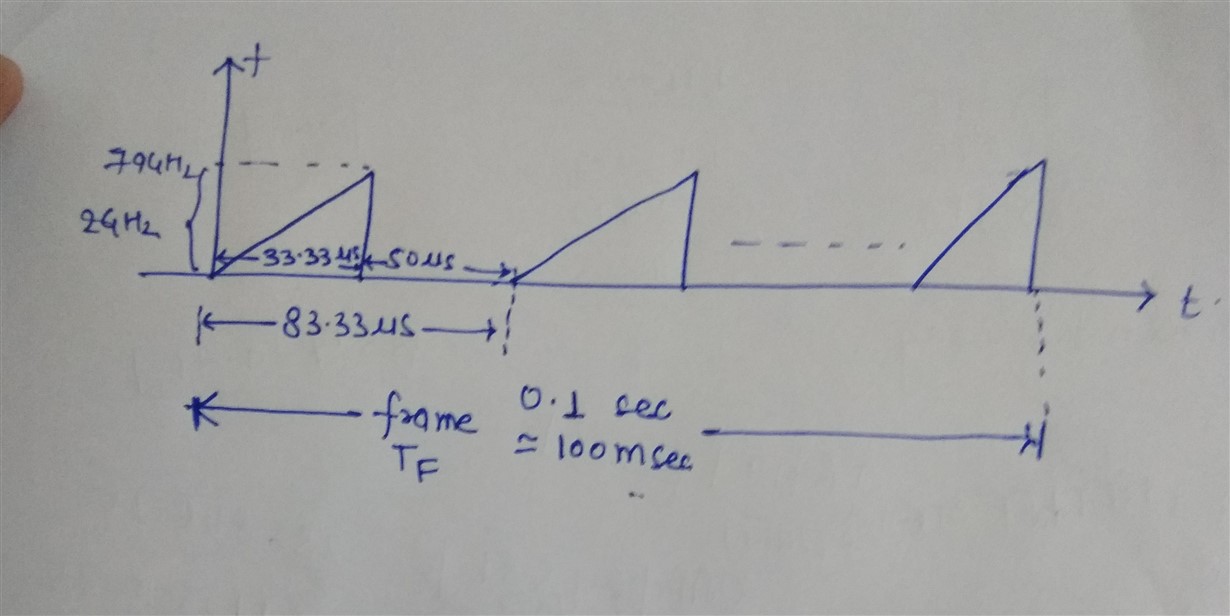Other Parts Discussed in Thread: AWR1243, DCA1000EVM
I want to configure the above chirp in using awr1843, I have the following confusion please help me, Note: Ramp slope =60 Hz/sec (is missing in figure)
1. for calculating the chirp duration in the mmwave studio what should be the ramp start and ramp end time, (should it be 83.33 microseconds or 33.33 microseconds)
2. What should I select the ADC to start sampling , Is it equal to the chirp on time i.e 33 microseconds.
3. If the 2nd case is correct then how to make the ramp duty cycle less than 50 %, and if the first case is correct then how to make the ramp bandwidth 2GHz( I have selected the slope 60e12 Hz/sec)
Please tell me the values of the parameter to be taken so that I can configure the same chirp.
Thank you


